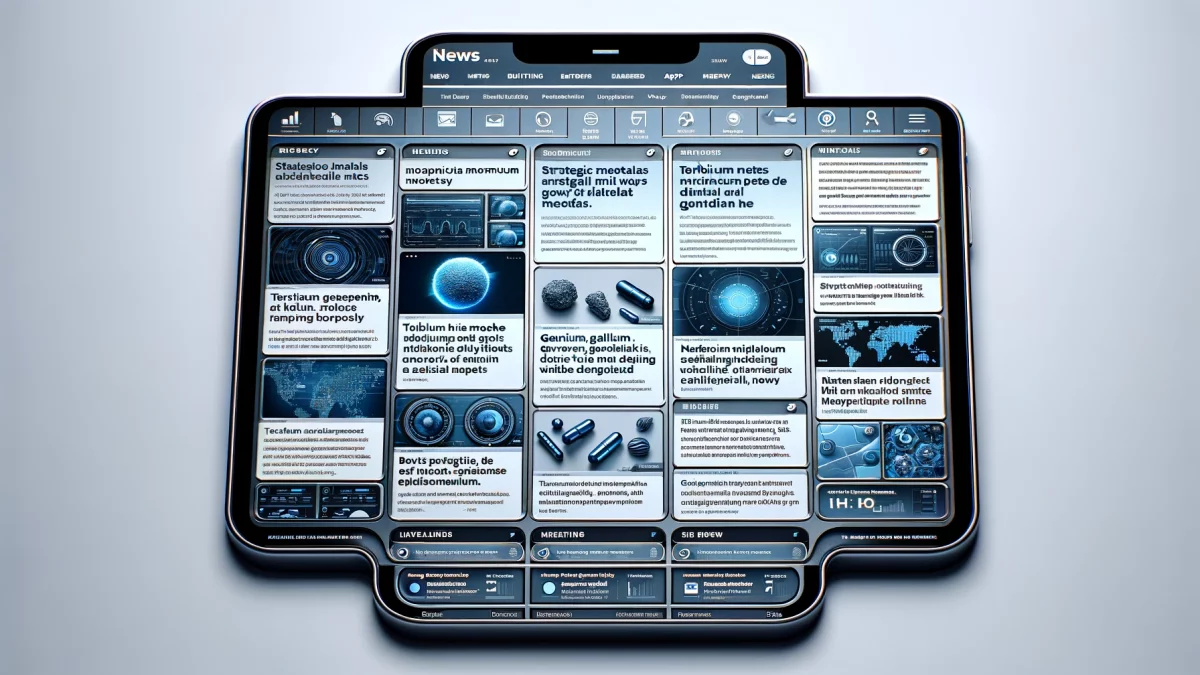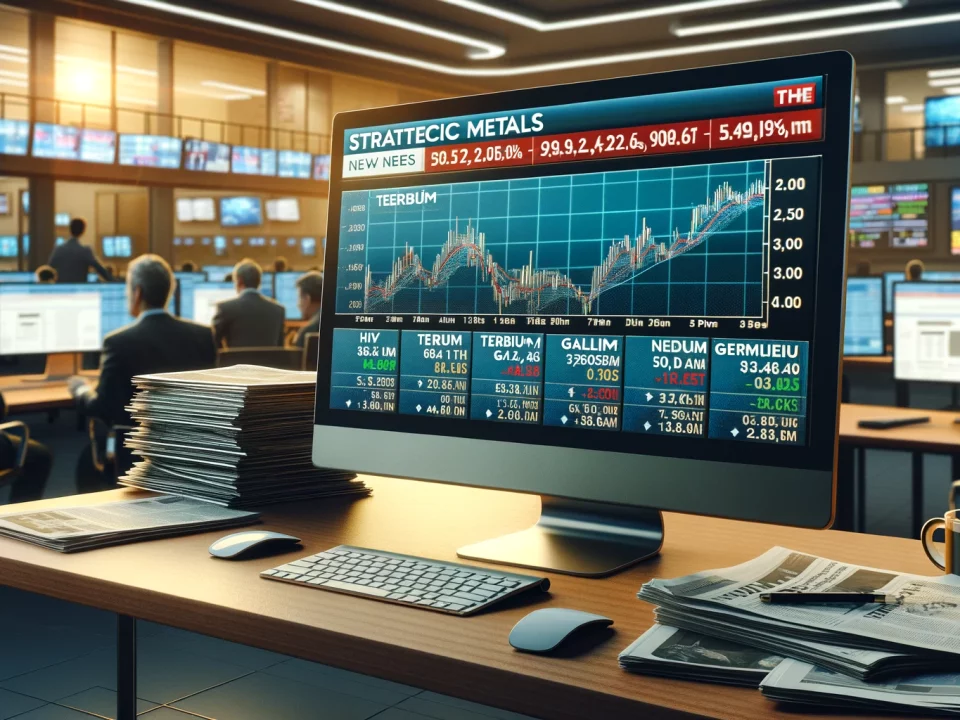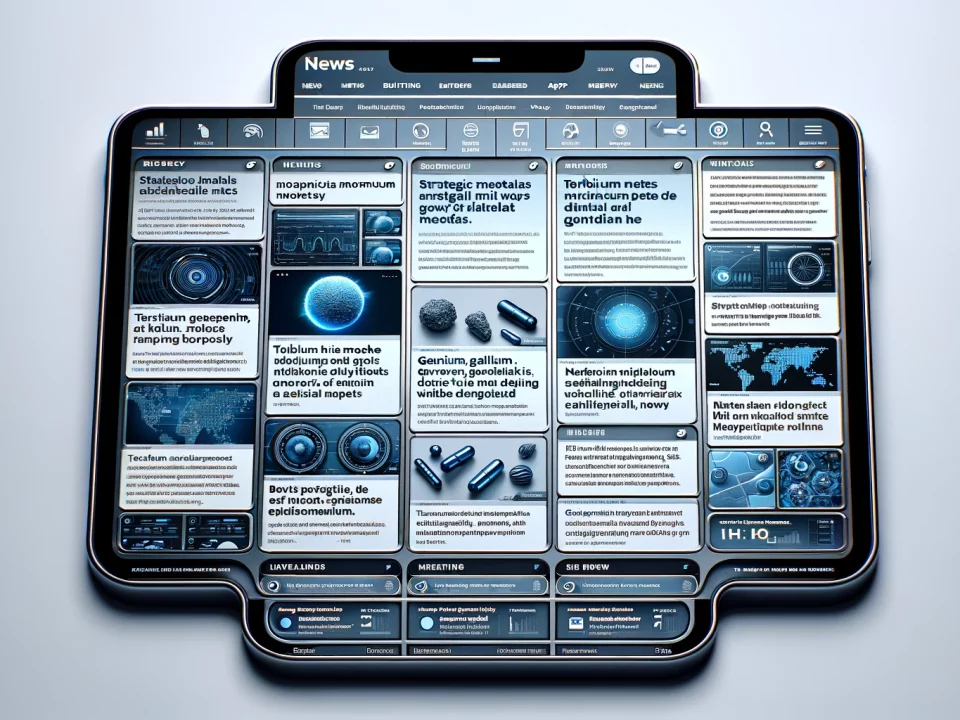
Weekly News Review August 4 – August 10 2025
August 10, 2025
Weekly News Review August 18 – August 24 2025
August 24, 2025The United States is ramping up its spending on critical minerals supply chains. The Department of Energy unveiled a total of $1 billion in possible funding this week. Meanwhile, with Arafura and Neo Performance Materials, two industry players reported key developments.
All this and more from the newsroom.
AUSTRALIA: RARE EARTH PROJECT RECEIVES FRESH GOVERNMENT FINANCING INTEREST –
Australian rare earth company Arafura has received a non-binding Letter of Interest from Australia’s export credit agency, Export Finance Australia (EFA), for potential further financing to support the development of its Nolans project in the Northern Territory. While the terms and size of the funding are still subject to due diligence, Reuters reports the amount to be around $100 million, citing sources familiar with the matter.
Nolans is set to be Australia’s first integrated rare earths mining and processing facility in the Northern Territory. Notable companies expressing interest in its rare earth products, particularly neodymium-praseodymium, include South Korean automotive giants Hyundai and Kia, along with U.S. conglomerate General Electric, which plans to use the material at its offshore wind turbine production hub in France.
Government-backed investments, such as those from Canada’s export credit agency and South Korea’s Eximbank, are strategically linked to long-term offtake agreements. The Australian government has also repeatedly signaled its willingness to back the project.
The latest development comes as Arafura also advances talks with Germany’s raw materials fund, which entered the evaluation phase for a potential investment in July.
CANADA: NEO- PERFORMANCE MATERIALS REVENUE UP ON STRONG MAGNET BUSINESS –
Canadian industrial materials supplier Neo Performance Materials announced its second-quarter results on Tuesday, reporting a sizable revenue increase. The company posted $114.7 million in revenue for the quarter, a 6.7% rise compared to the same period last year. Based on this performance, Neo also raised its full-year guidance.
A key driver of this growth was the magnet division, which saw the revenue rise nearly 20% year-over-year. Neo confirmed that construction of its European permanent magnet facility in Narva, Estonia, remains on track and within budget, with an opening ceremony scheduled for September 2025.
In addition to the magnet segment, the rare metals division also advanced during the quarter. Construction began on a heavy rare earth pilot line at its other Estonian facility in Sillamäe, designed to produce dysprosium and terbium. This new line is set to support the ramp-up of the European permanent magnet facility and serve other customers and markets.
In the statement, Neo also highlights ongoing geopolitical risks to supply chains, which drove more customers to hold strategic inventories to mitigate them, a move other market participants, such as German raw materials supplier Tradium, have called for in the past.
$1 BILLION BOOST TO UNITED STATES RESOURCE INDEPENDENCE –
The U.S. Department of Energy (DOE) plans to invest nearly $1 billion to advance technologies for the mining, processing, manufacturing, and recycling of critical minerals and materials. For too long, the United States has relied on foreign actors for the supply and processing of these resources, which are essential for modern life and national security, said U.S. Energy Secretary Chris Wright.
The funding call for battery material processing, battery manufacturing, and battery recycling will account for the largest share, about $500 million. Another $250 million will be allocated to the recovery of critical minerals and materials from byproducts in domestic industrial facilities. Strengthening the supply chains for rare earth elements will also be part of the program, with up to $135 million set aside for that purpose.
To expand the domestic critical materials industry, U.S. President Donald Trump has already issued several executive orders, including Unleashing American Energy and Immediate Measures to Increase American Mineral Production. In both cases, the DOE plays a central role in implementation.
INDIA SEEKS CO-OPERATION WITH JAPAN AND SOUTH KOREA –
The subcontinent aims to expand its rare earth sector and reduce its reliance on Chinese imports.
India’s state-owned mining company India Rare Earths Ltd. (IREL) plans to launch commercial production of rare earth magnets and is seeking partnerships with Japanese and South Korean companies, Reuters reports, citing a source familiar with the matter.
In June, India announced plans to subsidize rare earth magnet production with millions in government funding. The initiative is part of a broader strategy to strengthen the country’s high-tech sector and reduce reliance on neighboring China. Currently, 90 percent of the world’s permanent magnets made from rare earth elements are produced in China, which also accounts for much of the global mining and refining of these critical raw materials.
India holds vast rare earth reserves, the third largest in the world according to the U.S. Geological Survey, but currently exploits only a small portion and produces just a few thousand tons annually. Domestic processing capacity is even more limited. Apart from IREL, the only active player in this space is Toyotsu Rare Earths India (TREI), a subsidiary of Japanese trading house Toyota Tsusho. The two companies already cooperate, with IREL supplying rare earth materials to TREI for further processing and export to Japan.
According to the Reuters source, IREL has approached TREI for assistance in connecting with other Japanese industry stakeholders. One potential option under discussion is the construction of a dedicated magnet production facility in India.
Japan and South Korea have some of the most advanced rare-earth magnet industries in the world. However, Japan is the only one with a significant share of the global market, estimated at eight to nine percent depending on the source, while China dominates the rest.
Figure of the Week: – 353 – gold deposits were found between 1990 and 2024 around the world, holding a total of 3 billion ounces of gold in reserves, resources, and past production.






